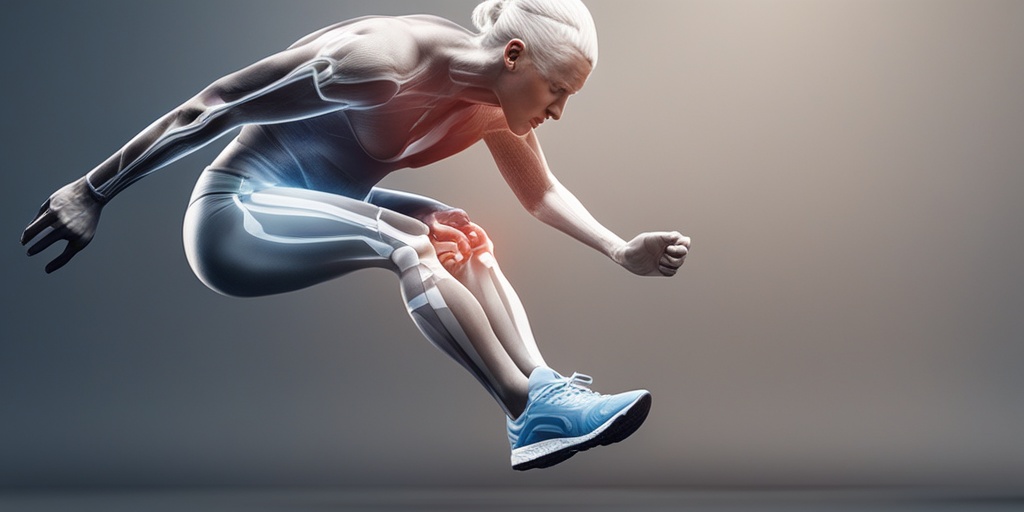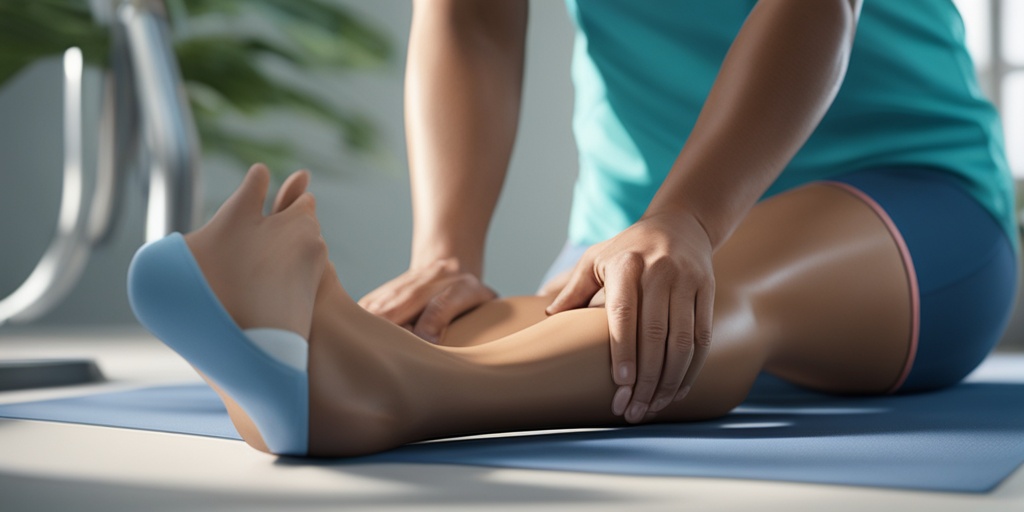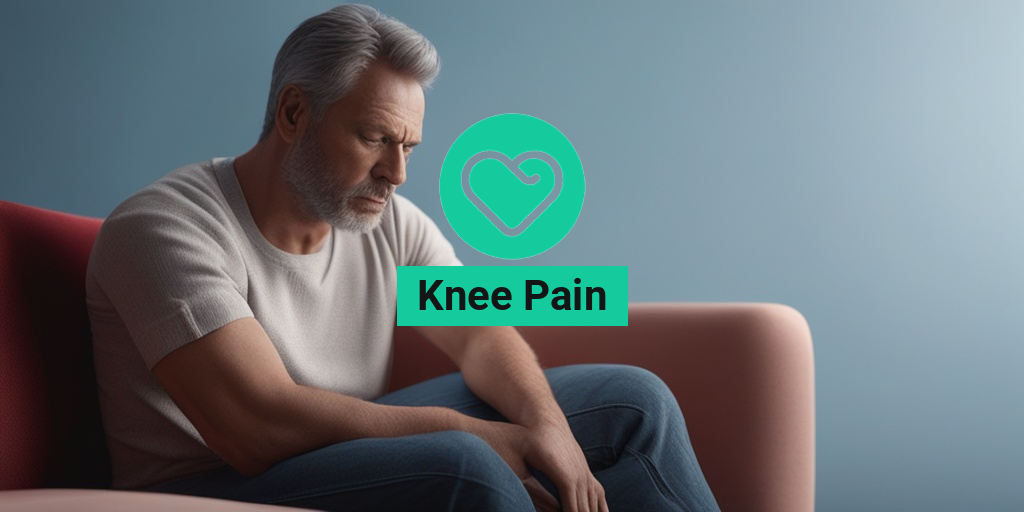What Is Knee Pain?
Knee pain is a common complaint that can affect anyone, regardless of age or activity level. It’s a complex issue that can arise from a variety of factors, including injuries, medical conditions, and lifestyle habits. But what exactly is knee pain, and how does it impact our daily lives?
The Anatomy of Knee Pain
The knee joint is a complex structure made up of bones, ligaments, tendons, and muscles. It’s designed to support our body weight, facilitate movement, and absorb shock. When any of these components become damaged or inflamed, it can lead to pain and discomfort in the knee area.
Knee pain can be acute or chronic. Acute knee pain is typically caused by a sudden injury or trauma, such as a fall or a sports accident. Chronic knee pain, on the other hand, is a persistent condition that can last for weeks, months, or even years. It’s often associated with underlying medical conditions, such as osteoarthritis, rheumatoid arthritis, or tendinitis.
The Impact of Knee Pain on Daily Life
Knee pain can significantly impact our daily lives, making it difficult to perform everyday activities, such as walking, running, or climbing stairs. It can also affect our mental health, leading to feelings of frustration, anxiety, and depression. In severe cases, knee pain can even lead to social isolation, as people may avoid social gatherings or activities that exacerbate their condition.
Fortunately, there are many effective ways to manage and treat knee pain. From lifestyle modifications to medical interventions, there are various options available to help alleviate knee pain and improve overall quality of life.
Knee Pain Symptoms
Knee pain symptoms can vary in severity and nature, depending on the underlying cause of the condition. Here are some common symptoms of knee pain:
Pain and Discomfort
The most obvious symptom of knee pain is, of course, pain and discomfort in the knee area. This can manifest as a dull ache, a sharp stabbing pain, or a burning sensation. The pain may be constant or intermittent, and it may worsen with activity or improve with rest.
Swelling and Inflammation
Knee pain is often accompanied by swelling and inflammation in the affected area. This can cause the knee to feel warm, red, and tender to the touch.
Stiffness and Limited Mobility
Knee pain can also lead to stiffness and limited mobility in the knee joint. This can make it difficult to bend, straighten, or move the knee, and may even cause the knee to lock or give way.
Clicking or Popping Sounds
In some cases, knee pain may be accompanied by clicking or popping sounds when moving the knee. This can be a sign of worn-out cartilage or other structural issues in the knee joint.
If you’re experiencing any of these symptoms, it’s essential to consult with a healthcare professional for an accurate diagnosis and effective treatment plan. Remember, knee pain is not something you have to live with – there are many ways to manage and alleviate it, and improve your overall quality of life. 💪
For more information on knee pain and its treatment options, consider consulting with a healthcare professional or visiting a reputable online resource like Yesil Health AI, which provides evidence-based health answers and personalized guidance. 🌟

Types of Knee Pain
Knee pain can manifest in different ways, and understanding the type of pain you’re experiencing can help you better address the underlying cause. Let’s dive into the common types of knee pain:
Acute Knee Pain
Acute knee pain is sudden and severe, often resulting from a traumatic injury, such as a fall or a blow to the knee. This type of pain usually resolves on its own within a few days or weeks with rest, ice, compression, and elevation (RICE).
Chronic Knee Pain
Chronic knee pain, on the other hand, is persistent and long-lasting, often lasting more than 12 weeks. This type of pain can be caused by underlying conditions such as osteoarthritis, rheumatoid arthritis, or ligament sprains.
Localized Knee Pain
Localized knee pain is confined to a specific area of the knee, such as the front, back, or sides. This type of pain can be caused by issues like tendonitis, bursitis, or meniscal tears.
Referred Knee Pain
Referred knee pain is pain that originates from another part of the body, such as the hip or lower back, but is felt in the knee. This type of pain can be caused by conditions like sciatica or hip misalignment.
Knee Pain Causes and Risk Factors
Knee pain can be caused by a variety of factors, including injuries, underlying medical conditions, and lifestyle habits. Let’s explore some of the common causes and risk factors:
Injuries and Trauma
Sudden injuries, such as falls, twists, or direct blows to the knee, can cause knee pain. Sports injuries, like ligament sprains or meniscal tears, are common culprits.
Overuse and Repetitive Strains
Repetitive activities, such as running, cycling, or jumping, can put excessive stress on the knee joint, leading to pain and inflammation.
Medical Conditions
Underlying medical conditions, such as osteoarthritis, rheumatoid arthritis, and gout, can cause knee pain. These conditions can lead to inflammation, cartilage wear, and bone damage.
Lifestyle Factors
Lifestyle habits, such as being overweight or obese, can put additional stress on the knee joint, increasing the risk of pain and injury. Poor posture, inadequate footwear, and inadequate warm-up or cool-down exercises can also contribute to knee pain.
Age is also a significant risk factor for knee pain, as the risk of developing osteoarthritis and other age-related conditions increases with age.
Understanding the type of knee pain you’re experiencing and identifying the underlying causes and risk factors can help you develop an effective treatment plan to alleviate your symptoms and improve your overall knee health 🏥.

Knee Pain Diagnosis and Tests
Knee pain can be a frustrating and debilitating condition that affects millions of people worldwide. If you’re experiencing knee pain, it’s essential to get an accurate diagnosis to determine the underlying cause and develop an effective treatment plan. In this section, we’ll explore the various diagnosis and tests used to identify the root cause of knee pain.
Medical History and Physical Examination
The diagnosis process typically begins with a thorough medical history and physical examination. Your doctor will ask you questions about your symptoms, such as:
- When did the knee pain start?
- How long have you been experiencing knee pain?
- What activities make the pain worse or better?
- Have you recently injured your knee?
During the physical examination, your doctor will:
- Inspect your knee for signs of swelling, redness, or warmth
- Check your knee’s range of motion and flexibility
- Perform a series of movements to assess your knee’s stability and strength
Imaging Tests
In some cases, your doctor may order imaging tests to help diagnose the underlying cause of knee pain. These tests can include:
- X-rays: To rule out bone fractures, osteoarthritis, or bone spurs
- MRI (Magnetic Resonance Imaging): To visualize soft tissues like ligaments, tendons, and cartilage
- CT (Computed Tomography) scan: To provide detailed images of the knee joint and surrounding tissues
- Ultrasound: To evaluate soft tissue injuries or inflammation
Other Diagnostic Tests
In addition to imaging tests, your doctor may perform other diagnostic tests, such as:
- Arthrocentesis: A procedure where a small sample of fluid is taken from the knee joint to check for signs of infection or inflammation
- Joint aspiration: A procedure where a small sample of fluid is taken from the knee joint to check for signs of infection or inflammation
By combining the results of these diagnostic tests, your doctor can develop an accurate diagnosis and create a personalized treatment plan to alleviate your knee pain.
Knee Pain Treatment Options
Once you’ve received a diagnosis, your doctor will work with you to develop a treatment plan tailored to your specific needs. The goal of treatment is to reduce pain, improve function, and enhance your overall quality of life. Here are some common knee pain treatment options:
Conservative Treatments
Conservative treatments are often the first line of defense against knee pain. These may include:
- Rest and ice: Avoiding activities that aggravate the knee pain and applying ice to reduce inflammation
- Physical therapy: A customized exercise program to improve strength, flexibility, and range of motion
- Bracing: Wearing a knee brace to provide support and stability
- Medications: Over-the-counter pain relievers, such as acetaminophen or ibuprofen, to reduce pain and inflammation
Surgical Interventions
In some cases, surgical interventions may be necessary to treat knee pain. These may include:
- Arthroscopy: A minimally invasive procedure to repair or remove damaged tissue
- Partial or total knee replacement: Replacing damaged or arthritic joint surfaces with artificial components
- Osteotomy: A procedure to realign the bones in the knee joint to reduce pressure and alleviate pain
It’s essential to work closely with your doctor to determine the best course of treatment for your knee pain. By combining conservative and surgical interventions, you can find relief from knee pain and improve your overall quality of life 🏥.

Knee Pain Exercises and Stretches
Knee pain can be a real nuisance, making everyday activities like walking, running, or even bending a chore. While it’s essential to consult with a healthcare professional for proper diagnosis and treatment, incorporating exercises and stretches into your daily routine can help alleviate knee pain and improve overall knee health. 🏥
Strengthening Exercises for Knee Pain Relief
Quad Strengthening Exercises: Weak quadriceps muscles can contribute to knee pain, so it’s essential to strengthen them. Try these exercises:
- Quadruceps contraction: Sit on the floor with your affected leg straight out in front of you. Tighten the muscle on the front of your thigh, and hold for 5 seconds. Release and repeat for 10-15 reps.
- Wall squats: Stand with your back against a wall and your feet shoulder-width apart. Slowly slide your back down the wall, keeping your knees bent at a 90-degree angle. Hold for 10-15 seconds and repeat for 10-15 reps.
Stretching Exercises for Knee Pain Relief
Hamstring Stretch: Tight hamstrings can put additional stress on your knee joint, leading to pain. Try this stretch:
- Sit on the floor with your affected leg straight out in front of you. Lean forward, reaching for your toes, and hold for 15-30 seconds. Repeat for 2-3 sets.
IT Band Stretch: The iliotibial (IT) band is a ligament that runs down the outside of your thigh, from your hip to your knee. Tightness in this area can contribute to knee pain. Try this stretch:
- Cross one leg over the other, keeping your ankle towards your opposite knee. Lean towards the side you’re stretching, keeping your back straight, and hold for 15-30 seconds. Repeat on the other side.
Knee Pain Prevention and Lifestyle Changes
While exercises and stretches can help alleviate knee pain, making lifestyle changes can help prevent knee pain from occurring in the first place. 🏃♀️
Maintain a Healthy Weight
Carrying excess weight can put additional stress on your knee joints, leading to pain and discomfort. Maintaining a healthy weight through a balanced diet and regular exercise can help reduce the risk of knee pain.
Wear Supportive Shoes
Wear shoes that fit properly and provide adequate support: Wearing shoes that are worn out or don’t fit properly can contribute to knee pain. Make sure to replace your shoes regularly and opt for shoes with good arch support.
Incorporate Low-Impact Activities
Choose low-impact activities: High-impact activities like running or jumping can put excessive stress on your knee joints, leading to pain. Consider incorporating low-impact activities like cycling, swimming, or yoga into your exercise routine.
By incorporating these exercises, stretches, and lifestyle changes into your daily routine, you can help alleviate knee pain and improve overall knee health. Remember to consult with a healthcare professional before starting any new exercise or treatment plan. 💊

Frequently Asked Questions about Knee Pain
Knee pain can be a debilitating condition that affects millions of people worldwide. Here are some frequently asked questions about knee pain, along with their answers:
What are the common causes of knee pain?
Knee pain can be caused by a variety of factors, including overuse or injury, arthritis, inflammation, and mechanical problems. It can also be caused by obesity, poor posture, and weak muscles.
What are the symptoms of knee pain?
The symptoms of knee pain can vary depending on the underlying cause, but common symptoms include pain or stiffness in the knee, swelling or redness, warmth or tenderness, and difficulty walking or bending.
How can I relieve knee pain?
There are several ways to relieve knee pain, including resting and icing the affected knee, taking pain-relieving medications, exercising regularly, and using physical therapy. Additionally, losing weight, wearing supportive shoes, and using knee braces or supports can also help alleviate knee pain.
What exercises can help alleviate knee pain?
Several exercises can help alleviate knee pain, including strengthening exercises such as squats, lunges, and leg press, as well as stretching exercises such as hamstring and quadriceps stretches. It’s also important to improve flexibility and balance through exercises such as yoga or Pilates.
Can knee pain be prevented?
Yes, knee pain can be prevented by taking regular breaks to rest and stretch, wearing supportive shoes, exercising regularly, and maintaining a healthy weight. Additionally, avoiding repetitive movements and using proper technique when engaging in physical activities can also help prevent knee pain.
When should I see a doctor for knee pain?
You should see a doctor for knee pain if you experience severe pain or swelling, difficulty walking or bearing weight, or increased pain at night. You should also see a doctor if you have a fever or redness in the affected knee, or if you have a history of knee injuries or conditions.
Remember to consult with a healthcare professional for personalized advice and treatment for knee pain. 🏥




